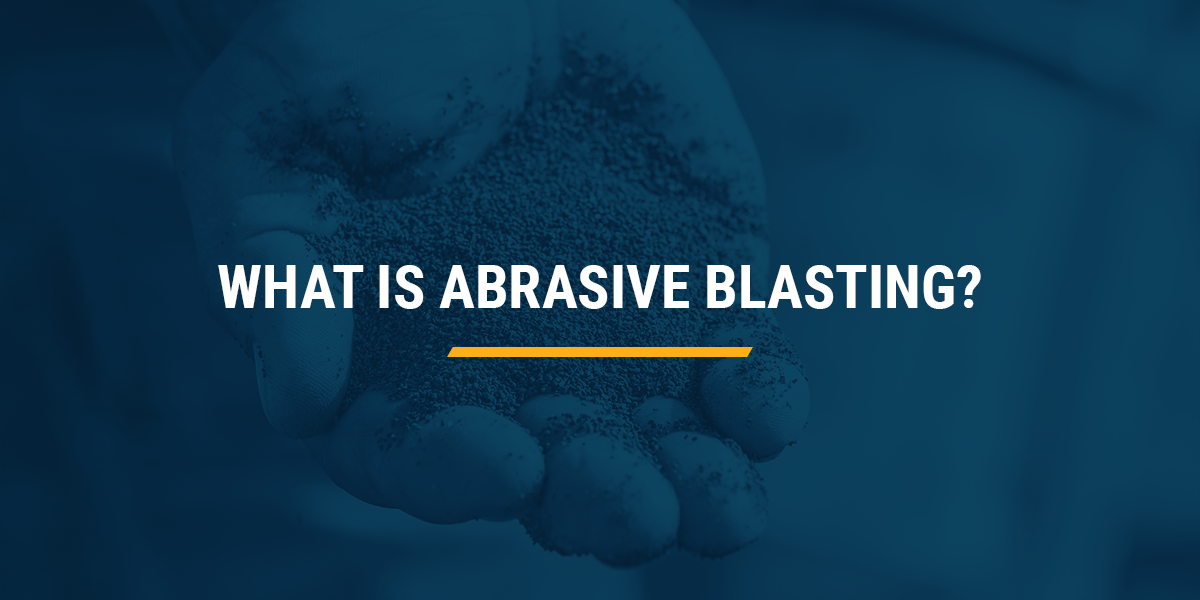If your manufacturing operations involve working with metals like steel or aluminum, you might have encountered issues such as dirt, chemicals, or surface imperfections that can interfere with finishing processes. That’s where abrasive blasting comes in. This technique is a fast and effective way to clean and prepare surfaces for further treatment, ensuring better results and longer-lasting finishes. Abrasive blasting refers to a surface treatment process that uses high-pressure streams of abrasive materials to clean, smooth, or roughen a surface. It's commonly used to remove contaminants, old coatings, rust, or scale from metal surfaces before painting, coating, or plating. The type of abrasive media used depends on the specific application and desired finish. While the terms "sandblasting" and "abrasive blasting" are often used interchangeably, it's important to note that traditional sandblasting—using silica sand—is not always the best option. Sand tends to be more expensive and can pose serious health risks due to its silica content. Instead, many industries now use alternative abrasives that are safer and more efficient. At Finishing Systems, we offer a comprehensive guide to help you choose the right abrasive media for your project. Whether you're looking for a gentle or aggressive finish, there's an abrasive material suited to your needs. Contact Us Abrasive blasting offers numerous advantages for manufacturers and industrial applications: Abrasive blasting works by using compressed air to propel small particles at a surface. This method can create a lot of dust, so proper containment and safety measures are essential. Here's a quick overview of the steps involved: Dry blasting relies on the impact of abrasive particles to clean surfaces, while wet blasting uses a mixture of water and abrasive to achieve a smoother finish. Wet blasting is ideal for delicate or refined surfaces, whereas dry blasting is great for heavy-duty cleaning and debris removal. Dry blasting systems can use either pressure pots or suction setups. Pressure pot systems are more powerful but costlier, while suction systems are more affordable and easier to handle. Wet blasting systems use a slurry pump to mix water and abrasive, offering consistent performance and reduced dust levels. Before starting any abrasive blasting project, here are some tips to keep in mind: Maintain a consistent air pressure of around 110 psi for optimal performance. Lower pressures can slow down the process and increase material waste. Always wear proper PPE, avoid silica-based materials, and ensure good ventilation. Never work in confined spaces without adequate airflow. Consider formal training to improve efficiency and reduce risks. Create a well-ventilated workspace and use the correct hose size for your equipment. A properly sized hose ensures better pressure and performance. There are many types of abrasive media available, each with unique properties: Depending on your project, techniques like micro-blasting or shot blasting may also be useful. For over 50 years, Finishing Systems has helped businesses achieve superior results through advanced abrasive blasting solutions. With state-of-the-art equipment and expert technicians, we deliver reliable, high-quality services tailored to your needs. Partition Equipment Roll Forming Machine Partition Equipment,Door And Window Partition Installation,Partitions Fixed To The Wall,Door And Window Partition Equipment Huai'an Senyu Intelligent Technology Co., LTD , https://www.jshasyzn.com
What Is Abrasive Blasting?
Updated: April 16, 2024
A Breakdown of Abrasive Blasting
What Are the Benefits of Abrasive Blasting?
The Abrasive Blasting Process
Dry vs. Wet Blasting: What’s the Difference?
Key Considerations Before Your Next Project
Boost Productivity
Prioritize Safety
Why Choose Finishing Systems?